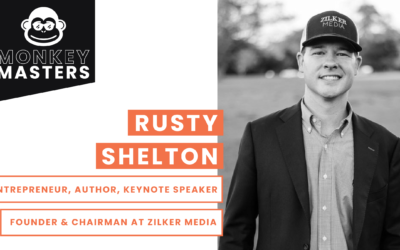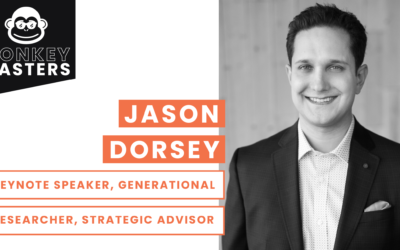NOTE: This post originally appeared on Forbes.com
Many parts of scaling a business are about the basics, the time-honored fundamentals that CEOs have used time and time again to grow a company. These pillars of running a successful business rarely warrant exceptions, but there are some business functions that require a leader to develop their own formula for success – unique to their product and unique to their company culture.
This is especially true when it comes to picking a sales leader.
Take it from a former CEO that has lived the pain of this personally: Sales excellence and hiring great sales leadership is the most important determinant of success for a high-growth company looking to scale.
Unlike like other business initiatives – such as choosing a CRM system or designing the company’s web site – hiring a sales leader does not allow for a generic, one-size-fits-all formula. Rather, it is a unique learning process, one that each CEO must sit down and take an introspective look at to develop – and then learn to repeat. When approaching a complex business problem like this, the key is to peel back the layers to get to ‘first principles.’ From there, you can build a great business with the right leader for your specific sales process at the helm.
Along my entrepreneurial journey, I made a ton of mistakes with this challenge before finally nailing down the formula that led to a successful, scalable solution for finding my head of sales. Let me save you from making the same mistakes by sharing those growing pains.
At first, I did what most first-time CEOs do with sales hiring – I assumed that the only thing I needed to do was “hire the right Head of Sales”. I was convinced that scaling the sales function was entirely dependant on making a great leadership hire so that is what i focused all of my energy on. And because I never hired a Head of Sales before, I relegated my interview process to time honored sales attributes – chronological resume review and basic questions about historical results and quota obtainment. This formula led me to fall in love with candidates that fit into a quintessential salesperson mold. Alas, I was dumbfounded when these great-on-paper hires failed at selling our software.
A prime example of this was the very first vice president of sales I hired – let’s call him Fred. Fred was one of the best interviewees I had ever met. He had long track record of sales success, extolled wisdoms about sale processes and swore up and down that he would hire an amazing team of ‘his guys’ that would drive us to sales greatness.
Well, Fred failed to sell anything, and his sales team of Fred carbon copies failed to sell anything either. So I fired him and found that not only had my business not scaled from a year earlier, I had actually gone backwards. So what went wrong?
It turns out I didn’t really understand my own customers’ buying process at all. Don’t get me wrong, I was deeply involved with our customers and understood our value proposition cold. But Fred never stood a chance because I hadn’t done my own objective research on what it would take to build a repeatable, scalable sales process of our unique ‘buyer’s journey’ for the organization.
How was a sales leader supposed to optimize the sales process when we didn’t even understand what our sales process was – and what it wasn’t?
This realization brings me to the first step of this process. And step one, like most business challenges for young CEOs, starts with stepping back and reflecting. Reflecting on what is truly unique about your business and the needs of your customers.
Start with simply determining how you are winning at sales. You do that by looking at the very end – the closing of the sale – and working your way backward. Ask yourself some basic questions about your product, who closes the sale, and how they got there. If you, as CEO, are heavily involved in sales, what do you specifically do in the process to help close the sale? Are you selling a transactional, high volume solution or a large, complex enterprise product? What attributes of your solution matter most: ease of implementation, financial benefits or cutting-edge technology?
Essentially: think about what makes the ultimate buyer say ‘yes,’ and painstakingly map out every step of the process from there.
An integral part of guiding this mapping exercise entails looking at your very best sales leaders and spending time understanding what they do to be successful. Is the sales leader enlisting a team with scrappy, cold-calling tactics or is it interconnected industry veterans that are networking their way into a sale? Is depth of product or industry knowledge key to sales success, or is it more important to build compelling financial models to win the day? Nailing down these sales leaders’ strategies is when your unique formula starts to take shape.
The next step gives your formula its teeth, it does this by taking the proven sales process and mapping out what attributes are needed in a head salesperson for them to be successful – and to a lead a team that will be equally as successful.
Identify the repeatable techniques and personality traits of the sales representatives that allows them to win at selling your product. Only then can you begin building a recruiting, hiring and training program that is tailored specifically to test for these attributes in a sales leader. This is crucial, because many CEOs try and clone the first principles that the sales process and your company culture rely on. However, it is cloning the attributes and techniques that nourish those first principles that allow your sales leadership thrive with your specific process.
For instance, looking back at my mistake at hiring Fred, it was clear I didn’t really know why and how we were winning sales with our product. I hadn’t mapped out the attributes necessary to make our sales leader successful in our particular brand of sales. So how in the heck was good-on-paper Fred supposed to come in and champion a sales process we didn’t even understand?
When analyzing what your optimal ‘Fred’ is like, it can be just as important to know which attributes you don’t want as it is to know which attributes you do want in a sales leader. There are many ways to vet these potential executives to see if they have the personality, techniques and experience to succeed in your particular formula for proven-sales glory. We liked a case-method of interviewing, but there are others like personality assessments or role playing sales scenarios that can force interviewees out of their classic salesman routines and into your specific buying process.
Once you have decided on an interview process and appointed a successful leader, be sure to track your sales leader and their team’s success over a six, twelve and eighteen-month period. Make sure that the formula you invested so much time, energy and hard work into is still getting it right. As market conditions shift, you may need to develop a formula 2.0, but as long as you are committed to understanding the unique ways the sales team works with your product, there is no reason you can’t consistently have a thriving sales leader at the helm.
Don’t cut corners with this seemingly tedious and elongated plan – and don’t assume that scaling sales is all about making one great hire. Getting sales right is the key to taking your idea, dream or emerging growth to the next level. Only by knowing thy self will you be able to know thy sales leader when you see them.


